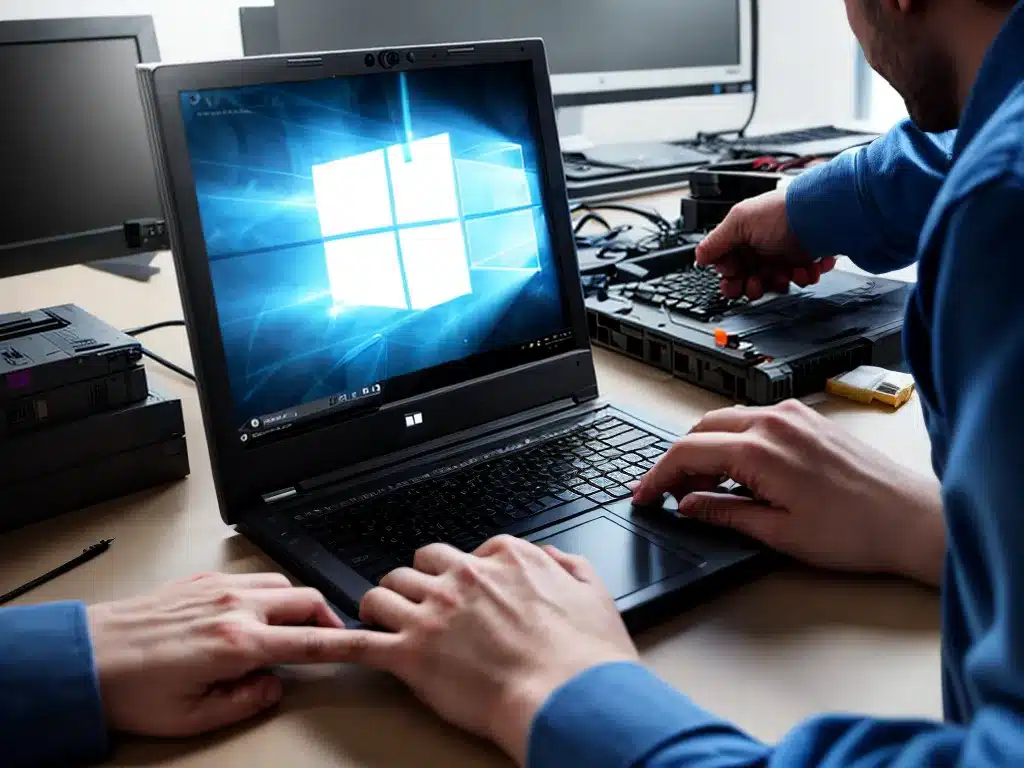
Introduction
Windows system files are crucial for the proper functioning of your operating system. Over time, these files can become corrupted due to various issues like faulty hardware, malware infections, improper shutdowns, etc. Corrupted system files often lead to crashes, freezes, slow performance, and odd application behaviors. Thankfully, Windows offers several built-in utilities to scan for and repair corrupted system files. In this guide, I will walk you through the various methods to fix corrupted Windows system files.
Symptoms of Corrupted System Files
Here are some common symptoms that indicate you may have corrupted system files on your Windows PC:
- Frequent crashes or blue screen errors
- Freezes and unresponsiveness
- Applications failing to start
- Odd behaviors like menus not working properly
- General instability and poor performance
If you notice any of these issues, it’s a good idea to check your system files for errors.
Windows System File Checker (SFC)
The System File Checker (SFC) is a built-in Windows utility that scans for corruptions and restores original copies of system files. Here are the steps to use SFC to fix corrupted files:
Step 1: Open Command Prompt as Administrator
Press Windows key + X and select “Command Prompt (Admin)”. This opens an elevated Command Prompt window.
Step 2: Run the SFC scan
Type the following command and hit Enter:
sfc /scannow
This will start scanning your system files immediately. The scan can take several minutes to complete.
Step 3: Restart your PC
Once the scan finishes, restart your PC and check if the problems are resolved.
SFC is quite effective in fixing corrupted files related to Windows components. However, it may not be able to fix corruptions in third-party apps and drivers.
DISM – Deployment Image Servicing and Management
DISM (Deployment Image Servicing and Management) is another command-line utility that scans Windows image files for errors and repairs them. It can fix corruptions that SFC may miss.
To use DISM to fix system file errors:
Step 1: Open elevated Command Prompt
Launch Command Prompt as Administrator, like in the SFC steps.
Step 2: Run DISM scan and repair
Type the following command:
DISM /Online /Cleanup-Image /RestoreHealth
This scans and fixes corruptions in the Windows image files. The process may take 10-15 minutes.
Step 3: Restart the PC
Restart your PC after DISM completes. Check if the issues are resolved.
DISM goes deeper than SFC in fixing system file errors. Run it if SFC could not resolve your problems.
Startup Repair
Startup Repair is an automatic diagnosis and repair tool in Windows. It runs during boot if Windows detects startup errors.
You can also manually initiate Startup Repair to fix booting issues caused by corrupted system files:
Step 1: Access Advanced Startup Options
- On Windows 10/8.1/8 – Go to Settings > Update & Security > Recovery and click Restart Now under Advanced Startup.
- On Windows 7 – Reboot and press F8 repeatedly to get the Advanced Boot Options menu.
Step 2: Choose Startup Repair
On the Advanced Startup screen, select Troubleshoot > Advanced Options > Startup Repair. This will scan and try to automatically fix issues.
Step 3: Reboot
Once complete, your PC will reboot normally. Check if the corrupted files are repaired successfully.
Startup Repair may fix errors that SFC and DISM cannot. It’s worth trying before more advanced troubleshooting steps.
Refresh or Reset Windows
If all else fails, the nuclear options to fix corrupted system files are refreshing or resetting Windows.
Refresh reinstalls Windows while keeping your data and apps. Reset reinstalls Windows and removes everything, giving you a clean slate.
-
On Windows 10/8 – Go to Settings > Update & Security > Recovery and choose Get Started under Refresh/Reset.
-
On Windows 7 – Boot from your Windows DVD or USB drive and choose Repair > System Restore option.
Refreshing or resetting Windows is often successful in resolving deep-rooted system file corruptions and instability issues. Backup your data before attempting either option.
Third-Party Tools
Some third-party utilities can also diagnose and fix corrupted system files:
-
CCleaner – Has an inbuilt System File Checker that repairs damaged files.
-
Restoro – Scans and restores modified Windows system files.
-
System File Repair – Repairs system file errors and related issues.
These tools provide an alternate way to fix corrupted files, but I recommend trying Windows’ own utilities first.
Summary
-
Corrupted system files often lead to Windows crashes, slowness, and instability.
-
SFC, DISM, Startup Repair are the main built-in options to fix corrupted files.
-
Refreshing or resetting Windows may help if other options fail.
-
Third-party tools provide an alternate method for repairing files.
-
Address corrupted system files promptly to restore performance and stability. Maintain regular backups as a precaution.
By following these troubleshooting steps, you should be able to resolve most system file corruption issues on your Windows PC. Let me know if you have any other questions!












